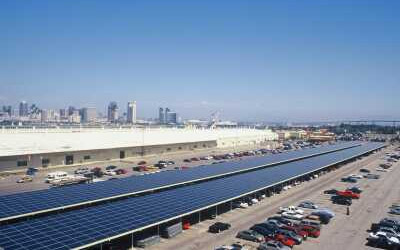Rising fuel costs and environmental concerns are driving demand for energy-efficient solutions in vehicles and buildings. Energy efficiency offers practical benefits, including cost savings and reduced carbon footprints, without requiring major upfront investments. This guide provides actionable strategies to improve energy efficiency in transportation and homes, helping you make smarter energy choices.
Revolutionary Technologies Transforming Vehicle Efficiency
Modern vehicles incorporate sophisticated technologies designed to extract maximum performance from every drop of fuel or kilowatt of electricity. These innovations represent significant advances over traditional automotive engineering.
Hybrid and Electric Powertrains
Hybrid vehicles combine internal combustion engines with electric motors to optimize fuel consumption across different driving conditions. Electric vehicles eliminate fuel consumption entirely, converting stored electrical energy into motion with efficiency rates exceeding 90%. Both options reduce operating costs while minimizing environmental impact.
Advanced Engine Management Systems
Contemporary vehicles employ computer-controlled systems that continuously adjust fuel injection, ignition timing, and airflow based on real-time driving conditions. These systems can improve fuel economy by 10-15% compared to older mechanical systems while reducing emissions.
Aerodynamic Enhancements
Manufacturers now prioritize aerodynamic design to reduce wind resistance. Features like active grille shutters, underbody panels, and optimized body shapes can improve fuel efficiency by up to 5% at highway speeds. Even small modifications like low-rolling-resistance tires contribute measurable improvements.
Lightweight Materials
The automotive industry increasingly uses aluminum, carbon fiber, and high-strength steel to reduce vehicle weight without compromising safety. Every 100 pounds of weight reduction typically improves fuel economy by 1-2%, making material selection a crucial efficiency factor.
Building Efficiency: Maximizing Performance While Minimizing Consumption
Buildings account for approximately 40% of total energy consumption in developed countries, making efficiency improvements particularly impactful. Strategic upgrades can reduce energy usage by 20-50% while improving comfort and indoor air quality.
Insulation and Air Sealing
Proper insulation creates a thermal barrier that reduces heating and cooling loads. Key areas include attics, walls, basements, and crawl spaces. Air sealing eliminates unwanted airflow through gaps and cracks, preventing conditioned air from escaping. Together, these measures can reduce energy consumption by 15-30%.
High-Performance Windows and Doors
Energy-efficient windows feature multiple panes, low-emissivity coatings, and insulated frames that minimize heat transfer. Similarly, insulated doors with proper weatherstripping prevent air leakage. These upgrades provide year-round benefits by reducing both heating and cooling demands.
Smart HVAC Systems
Programmable thermostats, zoned heating and cooling, and high-efficiency equipment optimize temperature control while minimizing energy waste. Modern heat pumps can achieve efficiency ratings of 300-400%, meaning they produce three to four units of heating or cooling for every unit of electricity consumed.
LED Lighting and Smart Controls
LED bulbs consume 75% less energy than incandescent bulbs while lasting 25 times longer. Motion sensors, dimmer switches, and daylight harvesting systems further reduce lighting energy consumption by ensuring lights operate only when and where needed.
Specialized Solutions: Window Tinting and Beyond
Certain efficiency improvements address specific challenges while providing multiple benefits. Car window tints like those in Salt Lake exemplify this approach, offering heat reduction, glare control, and UV protection that improve both comfort and energy efficiency.
Window tinting reduces solar heat gain in vehicles, decreasing air conditioning loads and improving fuel economy. Quality tint films can block up to 99% of UV radiation while reducing interior temperatures by 10-15 degrees Fahrenheit. This translates to measurable fuel savings during hot weather operation.
Building window films provide similar benefits for residential and commercial applications. These films reduce cooling costs, minimize furniture fading, and improve occupant comfort without blocking natural light. Professional installation ensures optimal performance and longevity.
Smart Glass Technologies
Electrochromic windows can automatically adjust their tint based on lighting conditions or user preferences. While more expensive than traditional window treatments, these systems provide precise control over heat gain and glare while maintaining visibility.
Reflective Roofing Materials
Cool roofs reflect sunlight and absorb less heat than traditional roofing materials. These surfaces can reduce cooling costs by 10-30% in hot climates while extending roof lifespan by reducing thermal stress.
Practical Energy-Saving Tips for Everyday Consumers
Efficiency improvements don’t always require major investments. Simple behavioral changes and minor upgrades can yield significant energy savings with minimal upfront costs.
Vehicle Operation Strategies
Maintaining steady speeds, combining errands into single trips, and keeping tires properly inflated can improve fuel economy by 10-20%. Regular maintenance including clean air filters and proper engine tuning ensures optimal performance. Planning routes to avoid traffic congestion reduces both fuel consumption and travel time.
Home Energy Management
Setting programmable thermostats to reduce heating and cooling when spaces are unoccupied can save 10-15% on utility bills. Using ceiling fans to circulate air allows comfortable temperatures at higher thermostat settings during summer months. Unplugging electronics when not in use eliminates phantom power loads that can account for 5-10% of residential electricity consumption.
Water Heating Efficiency
Water heating typically represents 15-20% of home energy use. Lowering water heater temperature to 120°F, installing low-flow showerheads, and insulating hot water pipes reduce energy consumption while maintaining comfort. Tankless water heaters provide hot water on demand, eliminating standby losses associated with traditional tank systems.
Appliance Optimization
Running dishwashers and washing machines with full loads maximizes efficiency per use. Using cold water for laundry when possible reduces water heating energy consumption. Cleaning dryer lint filters after each use maintains optimal airflow and reduces drying time.
Conclusion
Energy efficiency is a cost-effective way to save energy and support sustainability. Start small with measures like efficient lighting and thermostats, then expand to bigger upgrades. Professional energy audits can identify key improvements, reducing costs and easing energy demand.
